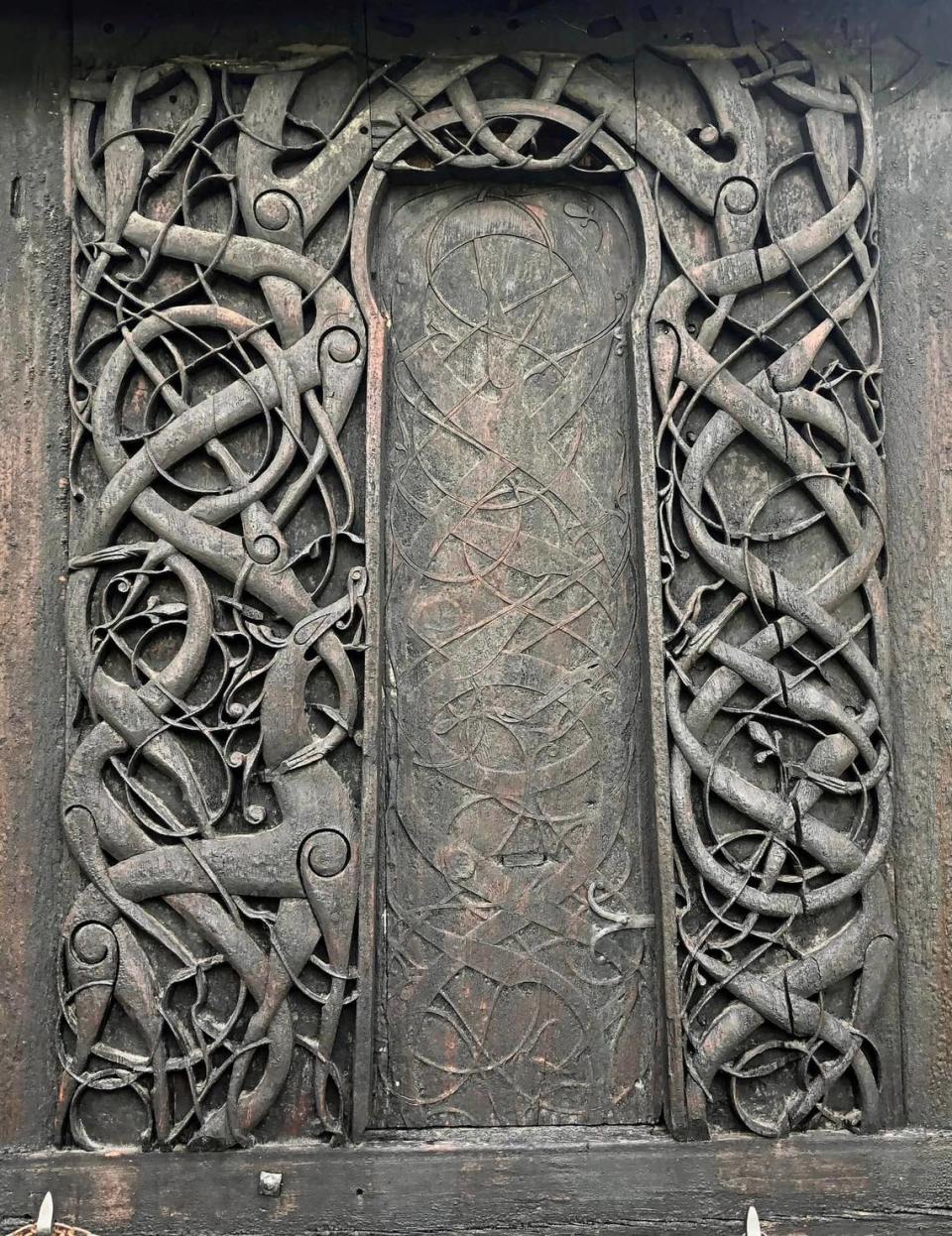Lump of soil hid ancient viking artifact of a mysterious animal, Norway museum says
Concealed inside an inconspicuous lump of soil lay an ancient Viking treasure.
The small artifact was discovered during an archaeological excavation in eastern Norway in 2021, according to a recent news release from the country’s museum of cultural history.
Upon being found, the object was X-rayed, indicating the presence of gold and bronze, and the encasing dirt was cleaned away, revealing an intricate piece of metal jewelry.
On seeing its distinctive shape, researchers determined it was a buckle, a fashionable one at that.
The particular style observed in the accessory was popular among residents of modern-day Norway just before the arrival of Christianity, which would date the piece to around 1000 A.D.
The bronze, gold-covered buckle is composed of a series of interconnected loops, which appear to portray an animal, researchers said.
Exactly what animal is depicted is up for debate. Some researchers believe the beast within the buckle is a lion encircled by serpents, while others see a horse or even a dragon.
The object may have also served as a brooch, researchers said.
It’s not known whether it would have been associated with one gender since none of these buckles have ever been recovered from a grave. They’re typically one-off discoveries.
It is known that the artifact would have been made using a clay mold, meaning it would have been mass produced and worn by many.
But while it may have been ubiquitous for a time, the buckle fell out of fashion following the spread of Christianity among the vikings, researchers said.
Beginning around 900 A.D., vikings throughout Scandinavia began begrudgingly converting to Christianity for economic, political and religious reasons, according to the National Museum of Denmark. By around 1050 A.D., Christianity had become the dominant religion among vikings.
While animal art featured heavily in viking culture, perhaps as a result of their “obsession” with animals, continental Christians, on the other hand, incorporated more abstract designs into their art, according to a study published in 2013 in the journal Society and Animals.
However, the animal-centric style, at least in some cases, appeared to live on in viking art even after their conversion to Christianity, according to the study.
In fact, the ultimate expression of the swooping style displayed in the buckle can be found at the Urnes Stave Church, a 12th century wooden structure in western Norway, researchers said.
The church features an ornately decorated arch with interconnecting loops and a slender, four-legged creature, indicating a blend of both viking and Christian culture.

Google Translate was used to translate press releases from the Kulturhistorisk Museum.
8-year-old picks up rock at schoolyard — and finds 3,700-year-old artifact in Norway
Hunt for leftover World War II explosives leads to something several millennia older
Extremely rare creature born at Tennessee zoo. Take a look at the adorable photos

